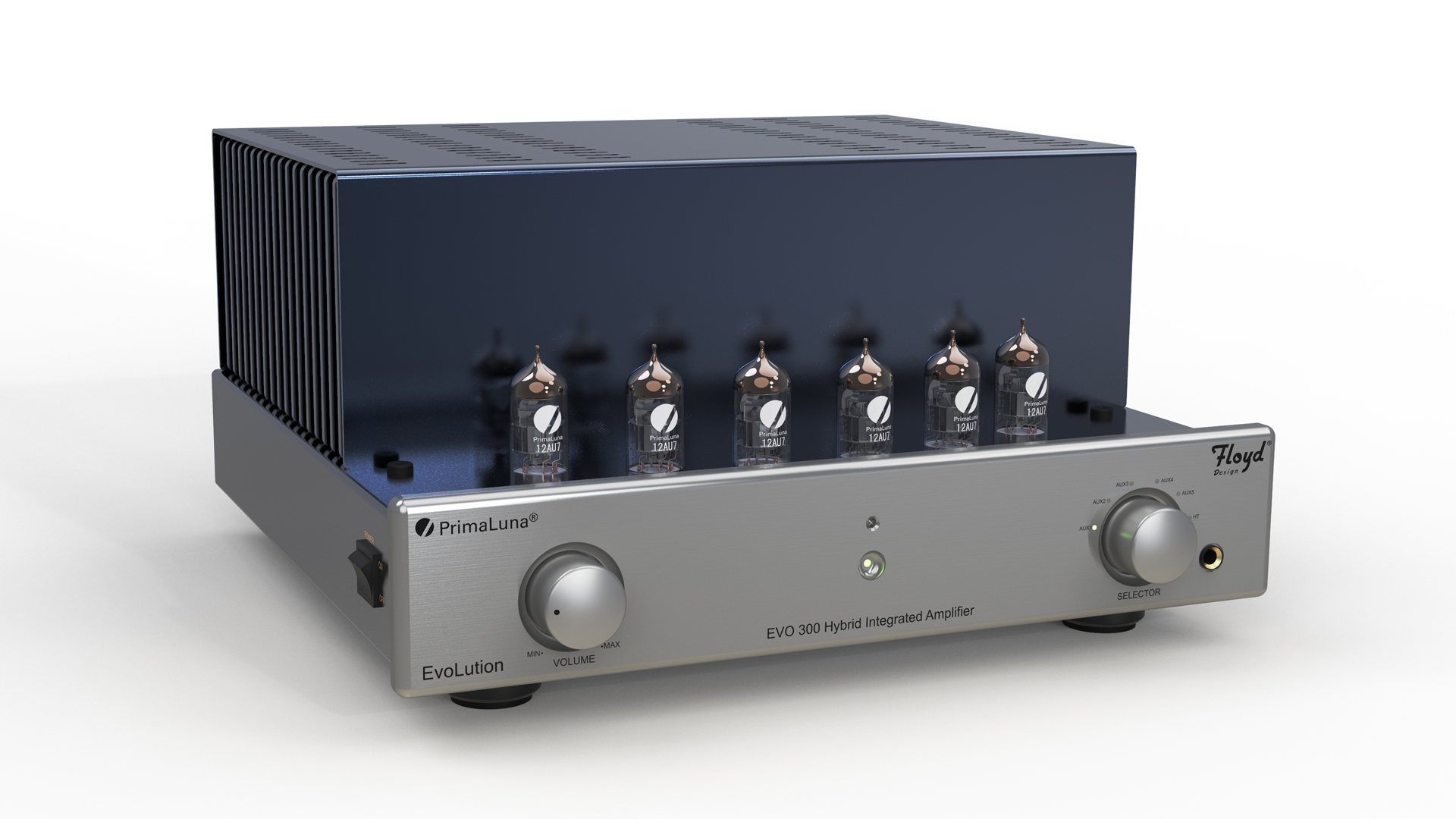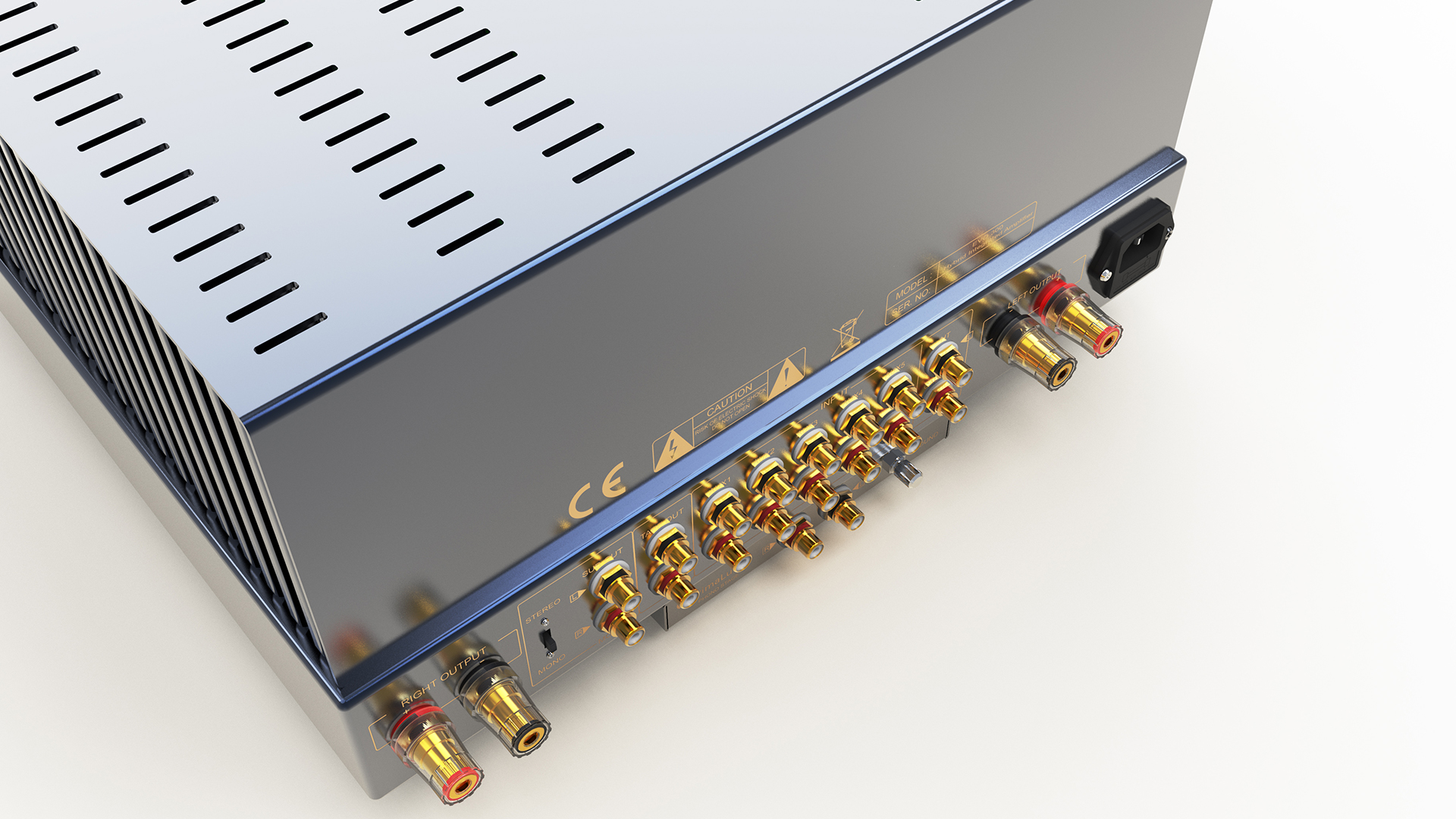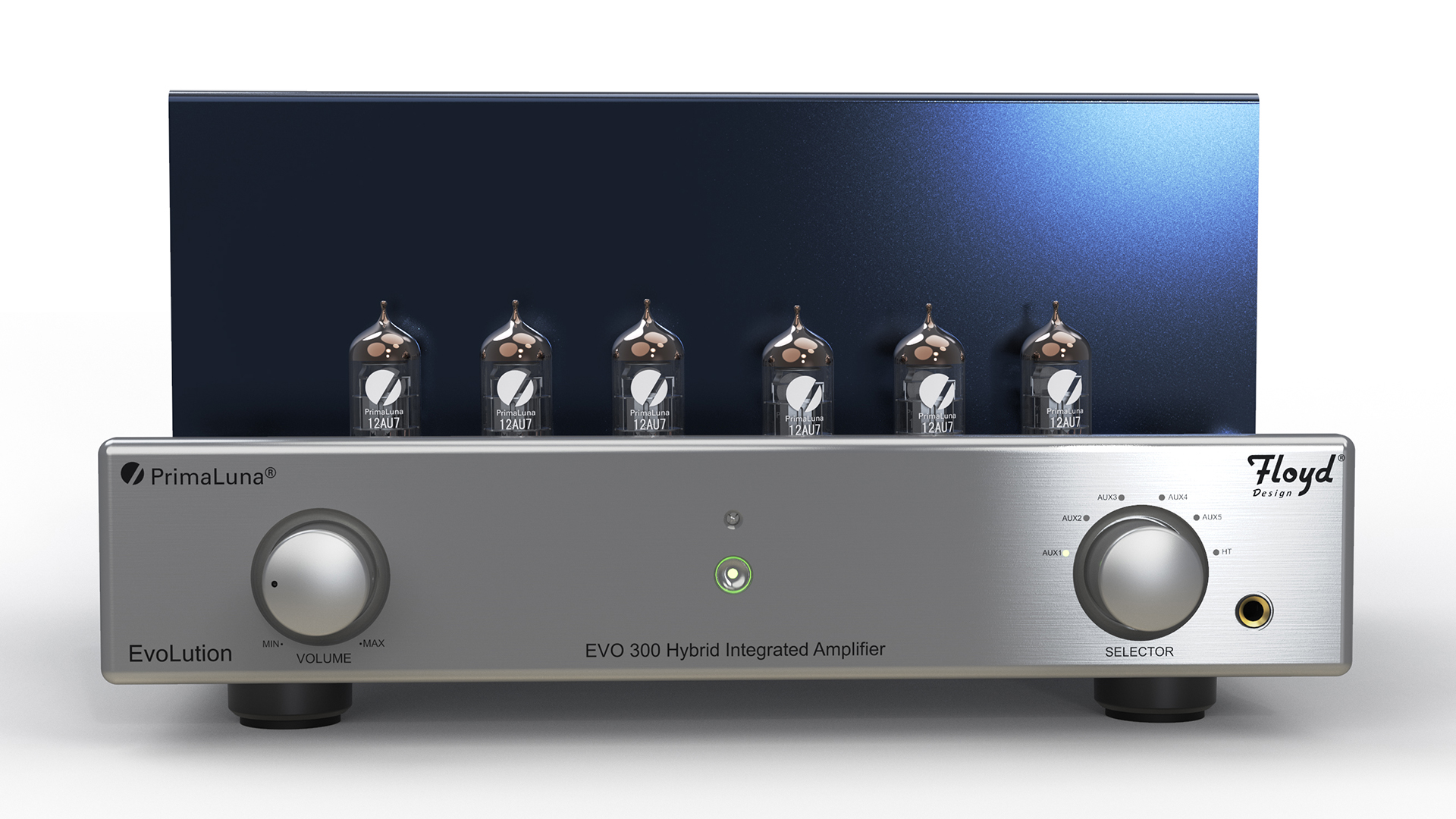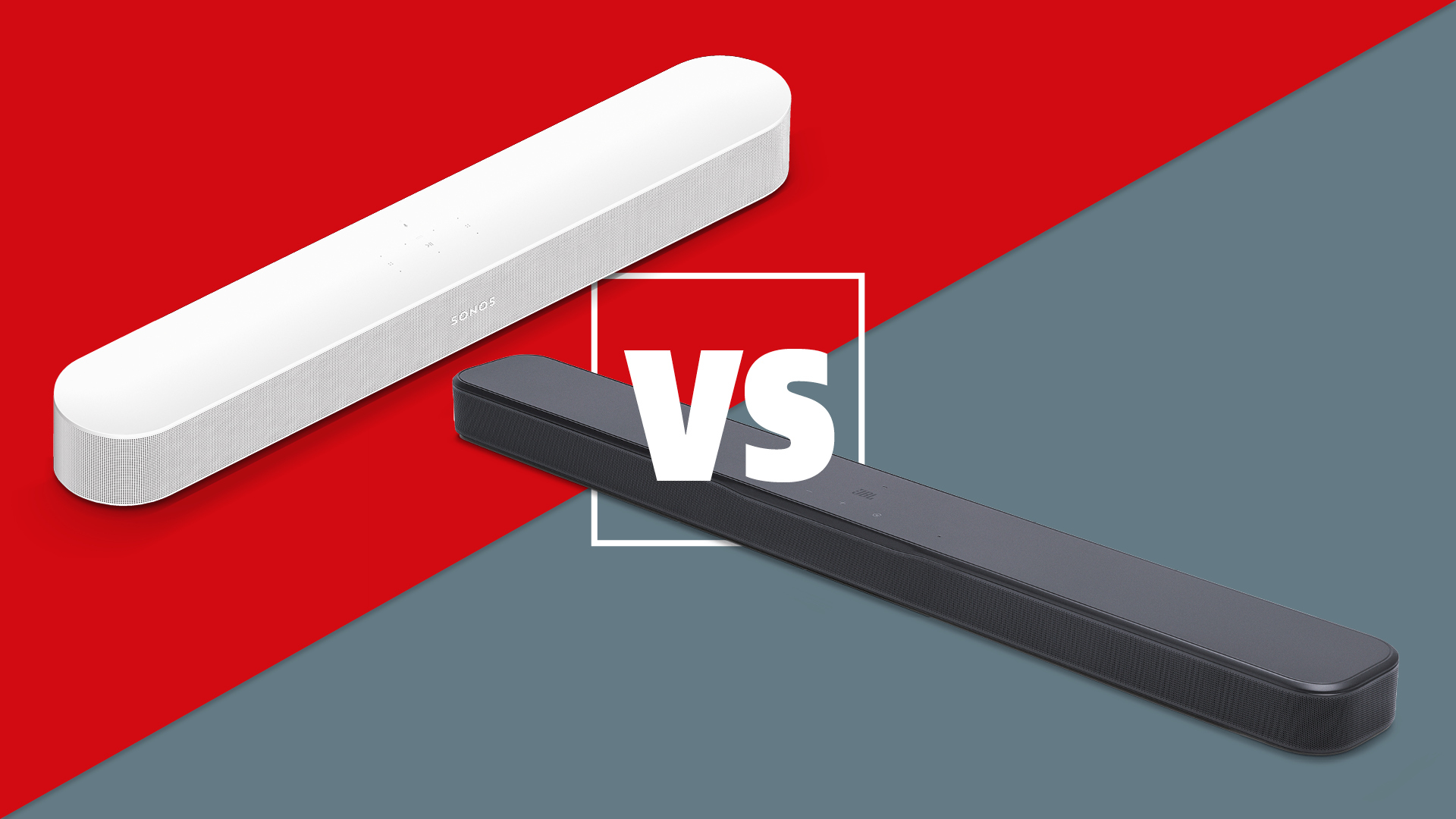What Hi-Fi? Verdict
The PrimaLuna Evo 300 Hybrid is well made and carefully considered but isn’t quite the all-round sonic talent we hoped for.
Pros
- +
Warm, robust and full-bodied presentation
- +
Forgiving nature
- +
Fine headphone output
- +
Sturdy build
Cons
- -
Restrained dynamic expression
- -
Rhythmic drive is lacking
Why you can trust What Hi-Fi?
PrimaLuna has specialised in valve-based amplification since it was founded in 2003. Since then, the Dutch company has carefully forged a reputation for producing solidly-made valve products at premium, but not true high-end prices. The Evo 300 Hybrid Integrated Amplifier under test is by far the most expensive product the company currently sells.
But it’s not only the price that sets this unit apart from the rest of the range. This is the first time PrimaLuna has stepped into hybrid amplification. In this case that means the preamp section uses valves while the power stages are solid state. To be more specific, the power amplifier section uses MOSFETs, which are considered to be closer to valves in the way they operate compared to other types of transistors. The result is a solid (claimed) 100 watts per channel into an 8 ohm load that rises to 150 watts as the load impedance halves. It would be hard to achieve those numbers in any sort of reasonably-sized all-valve powered alternative.
Build

The PrimaLuna’s preamp section uses six hand-selected 12AU7 valves, where two work in the input stage and the rest operate as drivers. They come pre-fitted, but should be checked to make sure they haven’t moved in transport before turning the power on. On a practical note, the Evo 300 Hybrid naturally runs warm, bordering on hot. It’ll need to be positioned in a place that has good ventilation to avoid overheating.
This amplifier’s build quality is admirable. Weighing in at 25kg it feels reassuringly solid. The casework has a sturdy no-nonsense way about it and the overall standard of fit and finish is what we would hope for at this level. There isn’t much in the way of controls, but both front panel dials – for volume and input selection – feel substantial in the hand and work with decent precision.
Take a look inside and that positive impression is reinforced by good quality internal components from the likes of Alps, Nichicon and Rubycon. For performance reasons PrimaLuna has hard-wired the circuits where possible rather than use connectors, and has chosen high quality circuit boards with suitably thick copper tracks to carry the signal for the same reason.

Type Valve/MOSFET hybrid integrated amplifier
Inputs Five single-ended RCA, one direct to power amplifier
Phono Optional moving magnet stage (£200, $299, around AU$440)
Headphone 6.3mm socket on front panel
Remote Yes
Power output 100 watts per channel
Weight 29kg
The preamp circuitry is fed by two dedicated power feeds leaving a third solely for supplying the power amplifier section – these sorts of details can really make a difference between a decent sounding product and a talented one.
There is a good range of line level inputs, though all five are single-ended. In addition, you can integrate the Evo 300 into a home cinema set-up by selecting the HT (Home Theatre) input option that bypasses the preamp and feeds the signal directly into the power amplifier. Don’t make the mistake of connecting a conventional source without a volume control into the HT input otherwise you may well be in the market for a new set of speakers. You have been warned.
The latest hi-fi, home cinema and tech news, reviews, buying advice and deals, direct to your inbox.
Spend an extra £200 ($299, around AU$440) on the optional moving magnet phono stage and you can play records too. Our review sample of the Evo 300 doesn’t have this fitted, so it is hard to say whether or not this module belies that modest price tag to produce a performance that lives up to the expectations generated by the rest of the product.
Features

We’re pleased to find that PrimaLuna has equipped the Evo 300 Hybrid with a headphone output. It is conveniently placed on the front panel, and a switch on the side panel toggles the amplifier’s output between that and the speakers. The company claims to have taken the design of the headphone amplifier seriously rather than treat it as a ‘tick box’ exercise as many do. We’ll find out if that’s true soon enough.
It isn’t uncommon to find expensive high-end products partnered with some of the cheapest feeling remotes around. The excuse most companies use is that it’s prohibitively expensive for small manufacturers to supply more luxurious handsets due to the relatively tiny quantities they deal with. PrimaLuna blows that argument out of the water with a lovely, responsive metal wand. Our only complaint is that some of the buttons – such as the one that switches the company’s valve models from Triode operation to Ultralinear configuration – aren’t relevant to the Evo 300 Hybrid.
An amplifier at this level demands talented partnering equipment, so we have Naim’s ND555/555 PS DR music streamer on hand to feed the line stages alongside a Technics SL-1000R/Vertere Sabre MM record player and Cyrus Phono Signature/PSX-R2 phono stage. At the other end of the signal chain we have our trusty ATC SCM50 monitors, but also use ProAc’s Response D2Rs and Triangle’s Esprit Comete EZ standmounters to see how the amplifier works with different flavours of speakers.
Sound

This PrimaLuna takes a number of days before its sound settles. Initially we hear a closed-in, rather opaque sonic balance that’s not particularly interesting. Given time, the presentation becomes clearer, more spacious and also more engaging. Even then, we find this amplifier is something of a mixed bag sonically. Let’s talk about the positives first.
Listen to Nick Cave’s Carnage set and it’s hard not to be impressed with the palpability of his gritty tones. The PrimaLuna sounds bold and confident, delivering a good amount of detail, but perhaps more importantly, organising that information into a cohesive whole. The presentation pushes the midrange into the spotlight, and that works well with music such as this.
There is a lovely sense of texture to Cave’s voice as well as the backing instrumentation. We’re particularly taken by the punch and body produced at low frequencies; it’s certainly beyond the scope of all-valve alternatives such as the Leben CS600X, even if they can counter with improved articulation. Compared to such rivals, the Evo 300 Hybrid also comes across as being significantly more muscular when partnered with less sensitive speakers such as our reference ATCs (85dB/W/m, in case you were wondering).
There’s a good dose of authority when we play a large orchestral piece such as Mahler’s Symphony No.10 and a fine impression of scale. There is enough insight to make sense of this dense piece of music and we enjoy the full-bodied way this amplifier renders the mass of instrumentation.
The PrimaLuna’s stereo imaging isn’t particularly expansive or open by class standards, but it is stable and nicely focussed. The Evo 300 Hybrid has no problem locking instruments in place when the piece becomes demanding.
We swap to headphones and are pleased to report that the built-in module does a great job. It really is a highlight of this product. We use both Focal’s closed-back Stellia and Grado’s classic open-backed RS1 and find the presentation clear and refined, and if anything even more transparent than the speaker outputs. This is one case where an additional outboard headphone amplifier isn’t required.
Regardless of whether we use headphones or speakers, the Evo 300 Hybrid has a smooth balance; one that feels a little too rolled off at the top-end and slightly thick in the bass to ever be called strictly neutral, though the upside is that it’s pretty forgiving. We find ourselves playing all sorts of recordings that would otherwise be deemed overly aggressive or tiring on more transparent equipment.
Taking a look at our notes, it’s the word ‘comfortable’ that keeps appearing, and that sums up the PrimaLuna’s nature well, and points to the areas of weakness too.

On a basic level there’s no denying that the Evo 300 Hybrid fulfils its brief. It’s an undemanding listen that really does marry the stereotypical qualities of valves with those of solid state. If that’s what you’re looking for, dive right in. However, in itself, that isn’t a guarantee that the product will deliver a truly satisfying all-round musical experience. And so it proves here.
There are a number of areas that we feel are open to criticism. The most obvious of these is its inability to portray dynamic contrasts convincingly. There isn’t the requisite level of dynamic expression we would expect from a product of this price. The result is that this amplifier sounds restrained, almost as if it is gently compressing the music signal, losing excitement in the process. Want to listen to Beethoven’s Fifth or Help! by the Beatles with some of the energy taken out? No, neither do we.
A side effect of this is that regardless of the partnering speakers, we find ourselves constantly playing with the volume level. It’s a struggle to find the point where the music displays the required sense of life without pushing the volume level too high for comfortable listening. This is an amplifier with clearly defined upper limits. Push it hard and things become harsh and edgy very quickly.
Combine these shortcomings with relatively poor rhythmic drive and the inability to communicate changes in musical momentum well, and it’s no surprise to find that our musical enjoyment is diluted.
Verdict

The PrimaLuna Evo 300 Hybrid is obviously built and designed with care, and the ambition to combine the best of valve and solid state is an admirable one. But, for us, the final result isn’t the all-round sonic treat promised. We want an amplifier that communicates the passion and drama in music properly. This one doesn’t manage that.
SCORES
- Sound 3
- Build 4
- Features 4
MORE:
Read our review of the Krell K-300i
Also consider the Leben CS600X
Read our Copland CSA 100 review
Best stereo amplifiers: the best integrated amps you can buy
What Hi-Fi?, founded in 1976, is the world's leading independent guide to buying and owning hi-fi and home entertainment products. Our comprehensive tests help you buy the very best for your money, with our advice sections giving you step-by-step information on how to get even more from your music and movies. Everything is tested by our dedicated team of in-house reviewers in our custom-built test rooms in London, Reading and Bath. Our coveted five-star rating and Awards are recognised all over the world as the ultimate seal of approval, so you can buy with absolute confidence.

